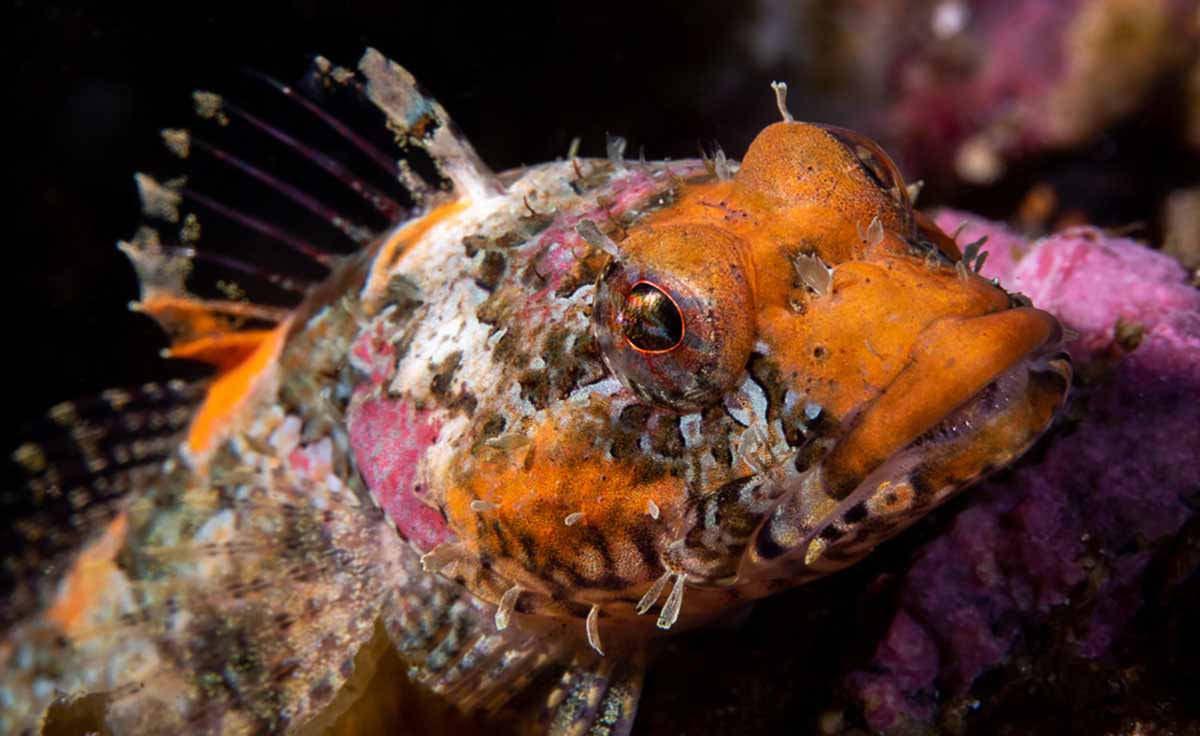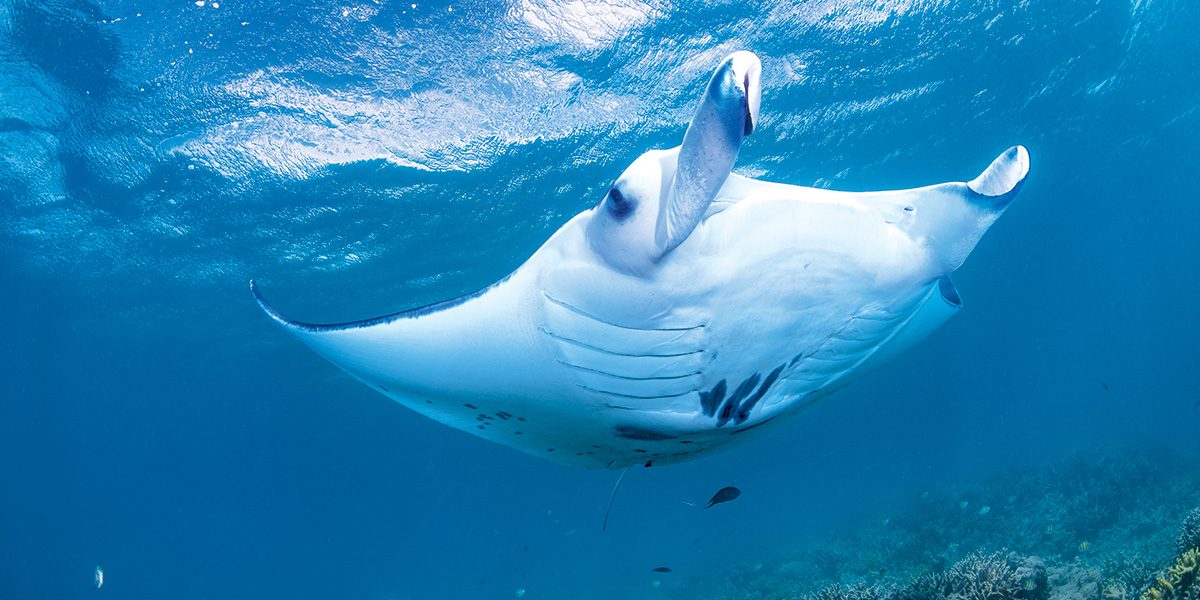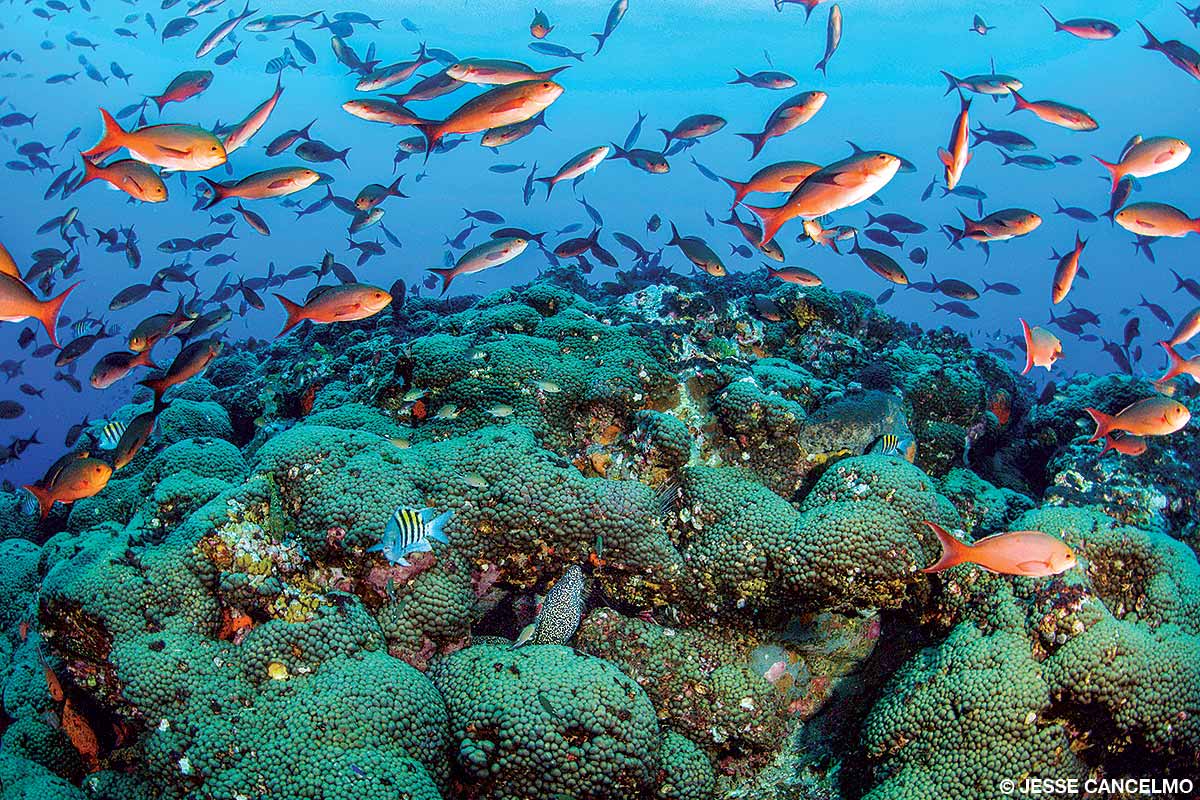Central California Photo Gallery
View Andy and Allison Salmon’s bonus photo gallery that accompanies their feature on diving Central California.

View Andy and Allison Salmon’s bonus photo gallery that accompanies their feature on diving Central California.

Shallow coral heads are on both sides of the M’il Channel opening as we slow down to locate our mooring ball. The incoming tide brings clean, blue water into the lagoon, creating opportunities for encounters with one of Yap’s main attractions just a few feet below the surface.

If you like the idea of a liveaboard adventure with remote, open-ocean diving where your dive boat is likely the only one on the reef, you’ll love a trip to Flower Garden Banks. It remains one of the best-kept secrets for wilderness diving in the continental U.S., where you can expect rare encounters such as a longlure frogfish on a sponge, scalloped hammerhead sharks feeding or a whale shark swimming by.

Located in the Bay Islands of Honduras, Roatán is a tropical gem nestled in the turquoise waters of the Caribbean Sea. The largest of the Bay Islands, Roatán sits about 30 miles off the Honduran coast between Utila and Guanaja. Its fringing reef system makes up the southernmost edge of the Mesoamerica Reef (the world’s second-largest reef system) and is arguably Roatán’s biggest attraction.

The story of the search for the Japanese submarine I-52 is one of two discoveries separated by time and purpose. In the dark of night in the Atlantic Ocean in 1944, U.S. Navy anti-submarine ships searched for a clandestine meeting between German and Japanese naval crews. Operating on captured intelligence, they sought to surprise and sink the two submarines. Half a century later, the I-52 still rested undiscovered on the seafloor, but this time the search was in the dark of the deep ocean in pursuit of possibility, not destruction.

Jesse Cancelmo provides a bonus photo gallery of images from Flower Garden Banks National Marine Sanctuary.

With the COVID-19 pandemic curbing international travel, divers can still choose to dive locally. Andy and Allison Sallmon take us along on their road trip to Central California dive sites, where we can discover macro subjects in Morro Bay and bountiful marine life at the well-protected sites at Carmel and Monterey Bay.

After reading Tanya Burnett’s feature about La Paz, see more of her amazing images in this photo gallery.

La Paz, on Mexico’s Baja California Peninsula, has always been connected to the sea, from its indigenous pre-Columbian people and a history of sea explorers, pearl divers and fishers to a modern destination attracting ocean-inspired tourists to interact with the abundant marine treasures of this region.

The U.S. currently has 14 national marine sanctuaries and two marine national monuments, and each has its own unique story. In preserving these irreplaceable resources, the sanctuaries protect who we are at our base — our soul as a nation. They reaffirm us and connect us to our incredible heritage.
